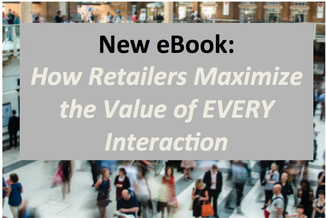
If the sightings of people walking into one another on the street, couples ignoring each other at restaurants and holding up traffic with heads down wasn't evidence that mobile phones have crept irreversibly into our lives, here is yet more cause for marketers to take serious note: “A combined 51% of time on retail sites took place on devices as of February (37% on smartphones, 14% on tablets) compared to 49% on PCs,” according to a new study by mobile ad network Millennial Media and comScore.
And it gets even better. According to that same study, “(55%) have used their handsets while in stores to compare prices, and 52% have made online purchases.” Yet so many operations are still slowly coming to terms with mobile and what role it plays in the sales pipeline. For those of you still wondering how best to tackle this beast, a few thoughts:
To win at mobile, start with the Web. Thinking about mobile can be a slippery slope of what ifs -- all the different sizes, operating systems, versions, apps stores, etc. Yet the smartest thing marketers can do is start with what is happening on the Web. Is your site “responsive” in that it automatically detects and conforms to suit the device? Is the mobile Web site optimized for the consumer on the go? The mobile Web is increasingly the most important pathway on any device and that often times, can solve the “native experience” issue that makes your brand inoperable. Handle that and you're more than halfway there.
Stay in the How: Knowing how your customer touches your products, their purchase (or cart abandonment) history, and when they shop in-store vs. online are all data points that should be at your fingertips. Act on that info. Comparing your “touch” data to your sales funnel and conversion data and understanding how your customers are using their devices along the path will allow you to start optimizing the content at each touch point – and invariably, to increase revenues.
Who are you talking to? While standardized targeting practices for mobile aren't quite there yet, some boundaries to help make decisions certainly are. Certain demographics are more likely to use mobile while in the store to scan barcodes, compare prices or share a product via social. Men as a whole, for instance, could be more likely to use store locators: a perfect place along the consumer path to, say, offer something in store at the time of actually finding a store. Different personas are ordering via app, while others are mainly using their devices to research before ever leaving the house. The data you already have can help drive the offer decisions.
Message with mobile in mind: This means length, pictures, and all offer content needs to be rethought in a multi-device, fragmented channel world. That ornate mosaic artwork you were using to get attention does not translate on a 3-inch screen. Neither does the 1000-word copy. It also means offering in-store purchase incentives could be speaking to people sitting, literally, outside your store. Furthermore, if you send an email (which is ever more likely to be opened via a smartphone or tablet), does it direct users to a relevant mobile site or app?
Nothing creates a gap – and drops a sale – like an email that offers a product or price point that cannot be found by clicking through to the mobile site. In today's world, offers can be opened on a desktop, pushed to Twitter then forwarded to a friend on mobile device back over email. Your offer needs to stand the test of being cross-channel. Which means, when speaking to that “connected” demo, having mobile in mind is increasingly crucial.


